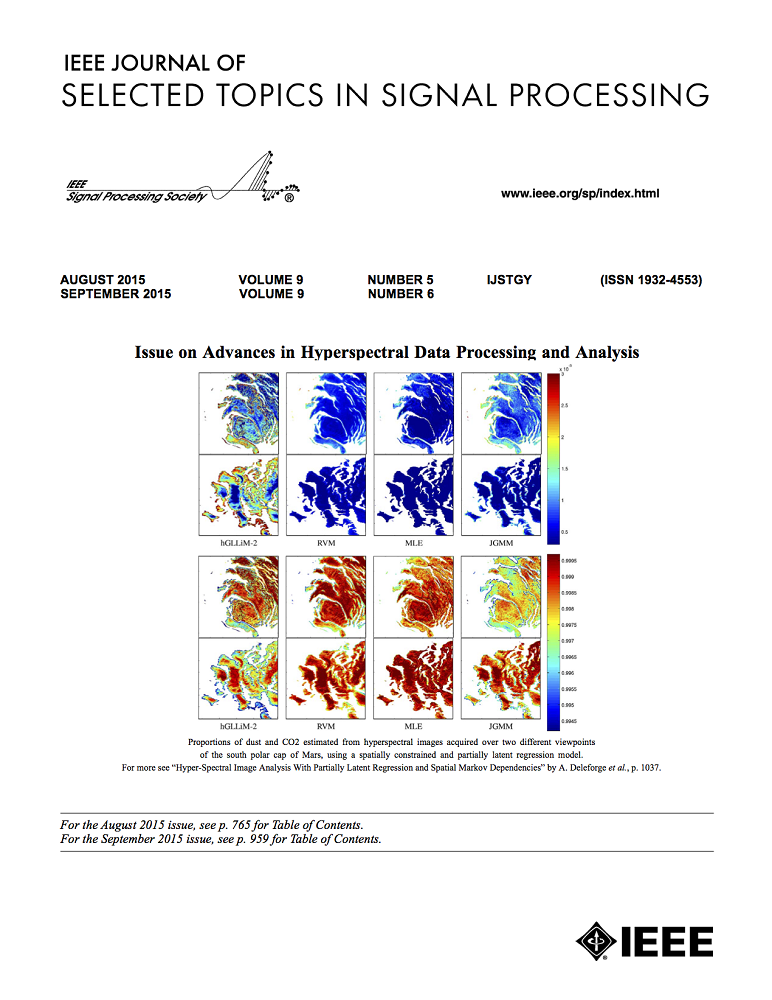IRS和无人机辅助无线供电边缘网络的能效优化
IF 8.7
1区 工程技术
Q1 ENGINEERING, ELECTRICAL & ELECTRONIC
IEEE Journal of Selected Topics in Signal Processing
Pub Date : 2024-08-30
DOI:10.1109/JSTSP.2024.3452501
引用次数: 0
摘要
随着物联网(IoT)设备和智能城市、智能工厂等对延迟敏感的业务数量的激增,能够高效处理大量用户访问和低延迟业务的下一代多址(NGMA)技术(如智能反射面(IRS)和毫米波)受到了广泛关注。其中,由于能够优化无线信道,提高数据和能量传输效率,IRS已应用于无人机(UAV)辅助的无线供电边缘网络。然而,在多无人机、多红外系统和多设备共存场景下的多维资源调度往往会导致大量高耦合变量和复杂的优化问题。为了解决上述挑战,我们提出了一种基于多智能体深度强化学习(DRL)的分布式调度算法,用于IRS和无人机辅助的无线供电边缘网络,以共同优化IRS的充电时间、相移矩阵、无人机的关联调度和无人机轨迹。首先,为满足无人机时间约束和设备能耗约束,提出了一个能效最大化问题,并将其表示为相应的马尔可夫决策过程(MDP)。在此基础上,提出了一种基于价值函数分解的多智能体DRL轻量级调度算法。最后,实验表明,该算法在算法收敛性和系统能效方面具有显著的优势。本文章由计算机程序翻译,如有差异,请以英文原文为准。
Energy Efficiency Optimization of IRS and UAV-Assisted Wireless Powered Edge Networks
With the surge in the number of Internet of Things (IoT) devices and latency-sensitive services such as smart cities and smart factories, Next Generation Multiple Access (NGMA) technologies (e.g., Intelligent Reflecting Surface (IRS) and millimeter wave), which can efficiently process a large number of user accesses and low-latency services, have gained much attention. Among them, due to the ability to optimize wireless channels and improve data and energy transmission efficiency, IRS has been applied to Unmanned Aerial Vehicle (UAV)-assisted wireless powered edge networks. However, scheduling multi-dimensional resources in multi-UAVs, multi-IRSs and multi-devices coexistence scenarios always leads to a large number of highly coupled variables and complicated optimization problems. To address the above challenges, we propose a multi-agent Deep Reinforcement Learning (DRL)-based distributed scheduling algorithm for IRS and UAV-assisted wireless powered edge networks to jointly optimize charging time, phase shift matrices of IRSs, association scheduling of UAVs and UAV trajectories. First, to satisfy UAV time constraints and device energy consumption constraints, we formulate an energy efficiency maximization problem and represent it as a corresponding Markov Decision Process (MDP). Then, we propose a lightweight scheduling algorithm based on multi-agent DRL with value function decomposition. Finally, experiments show that the proposed algorithm has significant advantages in terms of algorithm convergence and system energy efficiency.
求助全文
通过发布文献求助,成功后即可免费获取论文全文。
去求助
来源期刊

IEEE Journal of Selected Topics in Signal Processing
工程技术-工程:电子与电气
CiteScore
19.00
自引率
1.30%
发文量
135
审稿时长
3 months
期刊介绍:
The IEEE Journal of Selected Topics in Signal Processing (JSTSP) focuses on the Field of Interest of the IEEE Signal Processing Society, which encompasses the theory and application of various signal processing techniques. These techniques include filtering, coding, transmitting, estimating, detecting, analyzing, recognizing, synthesizing, recording, and reproducing signals using digital or analog devices. The term "signal" covers a wide range of data types, including audio, video, speech, image, communication, geophysical, sonar, radar, medical, musical, and others.
The journal format allows for in-depth exploration of signal processing topics, enabling the Society to cover both established and emerging areas. This includes interdisciplinary fields such as biomedical engineering and language processing, as well as areas not traditionally associated with engineering.
 求助内容:
求助内容: 应助结果提醒方式:
应助结果提醒方式:


